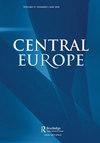捷克反口号的语言和功能:1948 - 1989
IF 0.1
2区 历史学
Q2 HISTORY
引用次数: 0
摘要
摘要本文详细分析了1948年至1989年捷克语反政权口号的语言特征和功能,包括其风格、比喻、指称和互文典故。该研究采用了一种混合的方法,将定量和定性方法与基于经验的历史研究相结合。运用不同的语言模型和工具(Leech的语言功能、Jakobson的交际功能、Austin的言语行为理论、Halliday的语域概念化和数据信息话语分析),结合一系列文献证据,可以在更广泛的共时和历时语境中识别特征和趋势。分析借鉴了广泛的口头和书面的例子,从各种来源,并强调语言和语言外活动之间的接口。有人认为,许多反对派的口号起源于流行的、集体的民间传统,并在文体和语义上带有这些传统的标志。反口号往往短小精悍、自然自发、反应性强,往往具有语言游戏、节奏朗朗上口、韵脚朗朗上口的情感审美特质。与官方宣传的呆板形成鲜明对比的是,异见表达的可触及性和创造性增加了抗议者的不满和要求的影响力。虽然这些口号和碑文不一定达到预期的效果,但它们在颠覆共产党的权威话语方面发挥了重要的象征作用。此外,抗议活动的互动方面有助于在强加规范的约束之外形成一种共同的身份,这对参与者来说有时可能比口号的信息或媒介更重要。本文章由计算机程序翻译,如有差异,请以英文原文为准。
The Language and Functions of Czech Counter Slogans: 1948 to 1989
Abstract This article presents a detailed analysis of the defining linguistic features and functions of anti-regime Czech-language slogans from 1948 to 1989 – their style, tropes, referents and intertextual allusions. The study employs a mixed methodology, combining quantitative and qualitative approaches with empirically based historical research. The application of different linguistic models and tools (Leech’s language functions, Jakobson’s communication functions, Austin’s speech act theory, Halliday’s conceptualization of register, and data-informed discourse analysis), together with a range of documentary evidence, allows for the identification of characteristics and trends in their broader synchronic and diachronic context. The analysis draws on an extensive list of oral and written examples, taken from a variety of sources, and places a strong emphasis on the interface between linguistic and extra-linguistic activity. It is argued that many of the opposition slogans had their origins in popular, collective folk traditions, and bore the hallmark of those traditions stylistically and semantically. The counter slogans tended to be pithy, spontaneous and reactive, and frequently had an affective aesthetic quality, which was characterized by language play, catchy rhythm and rhyme. The accessibility and creativity of the expressions of dissent, which stood in contrast to the woodenness of the official propaganda, added to the impact of the protesters’ grievances and demands. While the chants and inscriptions may not necessarily have achieved their desired outcomes, they nonetheless played a significant symbolic role in subverting the Communist Party’s authoritative discourse. Moreover, the interactional aspect of the protest helped to forge a common identity outside the constraints of the imposed norms, which may have sometimes been more important to the participants than either the message or the medium of the slogans.
求助全文
通过发布文献求助,成功后即可免费获取论文全文。
去求助
来源期刊

Central Europe
HISTORY-
CiteScore
0.20
自引率
0.00%
发文量
7
期刊介绍:
Central Europe publishes original research articles on the history, languages, literature, political culture, music, arts and society of those lands once part of the Habsburg Monarchy and Poland-Lithuania from the Middle Ages to the present. It also publishes discussion papers, marginalia, book, archive, exhibition, music and film reviews. Central Europe has been established as a refereed journal to foster the worldwide study of the area and to provide a forum for the academic discussion of Central European life and institutions. From time to time an issue will be devoted to a particular theme, based on a selection of papers presented at an international conference or seminar series.
 求助内容:
求助内容: 应助结果提醒方式:
应助结果提醒方式:


